Comfrey /Symphytum officinale/ is a perennial herb that is popular in Asia and Europe. The name was not accidental - from time immemorial, we know that comfrey can soothe and help repair fractures, sprains, dislocations, stretching of the tendons.
Roman physicians used it for wounded military personnel returning from the battlefield. The first detailed description of comfrey was found in the diaries of Avicenna. The legendary healer points the herb as a universal tool for healing bone and soft tissue to relieve pain in gout, rheumatism, arthritis.
Comfrey reaches a height of 50 to 100 cm. The rhizome is short and black, long and with branched roots. The stem is erect and the upper part is branched and ridged. Leaves are consistent with length 10-15 cm flowers are collected in spirally twisted petals. The corolla is bell- like and in bloom becomes violet to purple-red, later turns into light blue. The fruit when ripe breaks into four black, smooth and shiny nuts.
Composition of comfrey
The healing power of the plant lies in its roots. It is black in color, hence the name of the herb. The most valuable ingredient of comfrey is alantonin. The roots of comfrey contain 0.8-1% of alantonin.
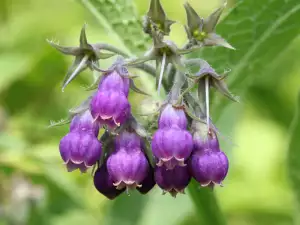
The composition of comfrey also includes simfitin, laziocarps and ehinatin. It also contains starch, mucilage, tannins, resins, asparagine, triterpenes, phenolic acids and traces of essential oil.
Selection and storage of comfrey
Comfrey is found in pharmacies, the price is about 1 Euro (+-1 dollar 30) for sale in packs of 100, store the herb in a dry and ventilated area away from direct sunlight. Comfrey grows in damp places in shrubs and weeds in mountains and foothills.
The root is harvested in the months of March, August, or November. The removed roots are cleaned, thoroughly washed, the thicket must be cut. Dry in the shade, as the drying process should be quick, otherwise the root darkens inside. Properly dried root should be black on the outside but the inside is white. Ready roots are stored in a dry and ventilated place.
Benefits of Comfrey
The roots of comfrey have very good anti-inflammatory effects. The herb stimulates the growth of fiber and helps to rebuild tissues in osteomyelitis, fights bone inflammation, sprains, bruises, sprains.

Comfrey is used in neuralgia resulting from injury, amputation, poorly healing wounds, ulcers of the stomach and duodenum, purulent processes. When used for the healing of external wounds, the area should be well cleaned, followed by a wash with comfrey.
Traditional medicine recommends elecampane be used for treatment in three forms - gargle, tea, compresses. Root tea is used in laryngitis, cough, poor circulation, bronchitis, prolonged menstruation, colitis and certain other problems with the gastrointestinal tract.
Gargle with comfrey helps with sore throat and bleeding gums. Compresses of the herb are used in trauma, bone disease, gout, growths, muscular rheumatism ribs. The extract of comfrey is a key component of certain medications for topical use. Tincture of comfrey is used undiluted for treating acne. Ointments made from the leaves of the herb are applied to bruises and contusions.
Dangers of comfrey
New data shows that the pirolizide alkaloids that are found in comfrey have a carcinogenic effect. Preparations from the root of the herb are dangerous for internal use, unless guaranteed clearing of the alkaloids. Although tea from the root of comfrey has been used traditionally for many years, the risk of these alkaloids is serious. Comfrey should not be applied to contaminated wounds because the rapid healing can seal pus or dirt.
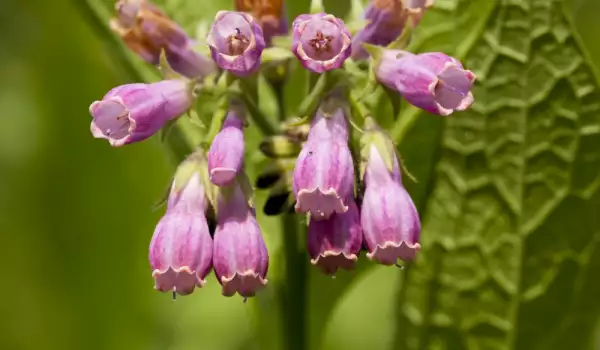
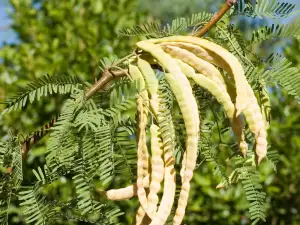
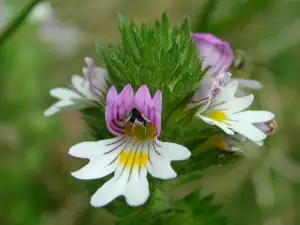

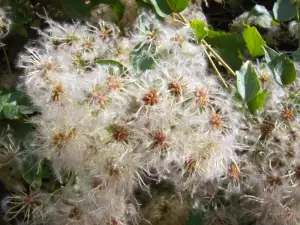
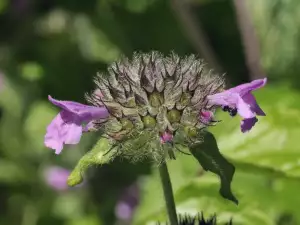

Comments